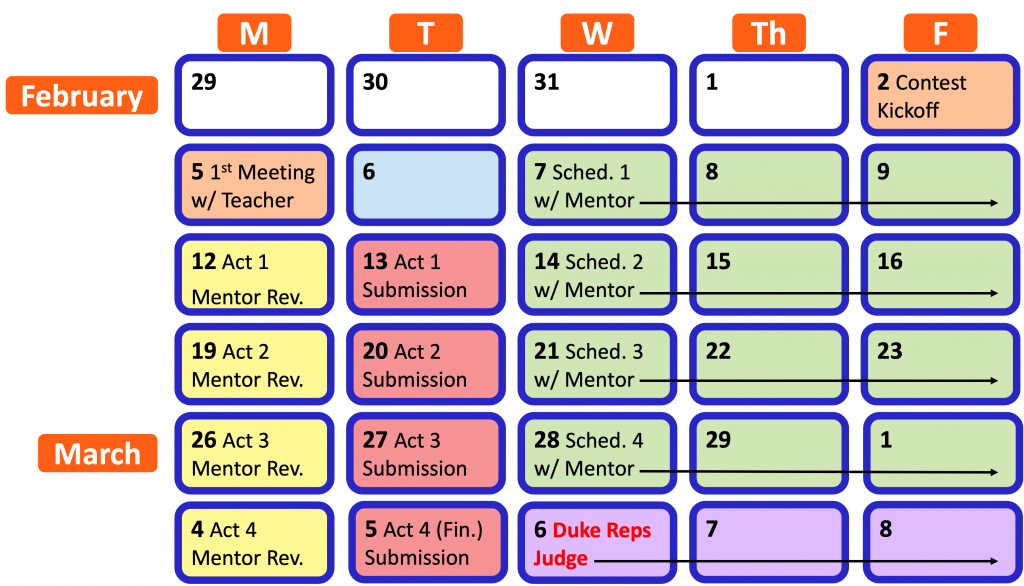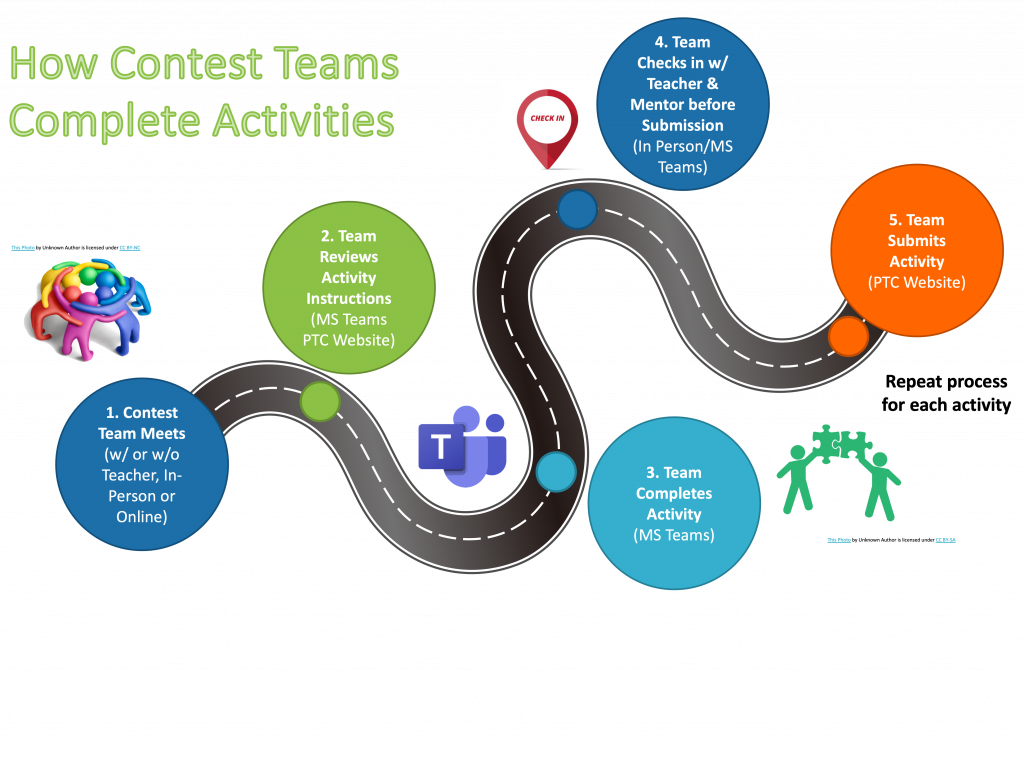ABOUT THE MIDDLE SCHOOL CONTEST
This contest introduces middle school students to design thinking practices that enable them to apply concepts in IoT devices and artificial intelligence. Sponsored by Duke Energy, the contest focuses on the need to improve energy efficiency and reduce costs in individual homes. Students develop practices to measure and improve power usage and energy consumption within the ecosystem of a single home, with the goal of designing a smart energy management system that can address different home scenarios. The contest has students working together to create a smart energy management system that examines the “on”/” off” operating schedule of appliances/devices whose actual power usage is measured in students’ own homes. This contest encourages students to collaborate in measuring the performance of their home devices to represent operations in a single home, then engages students in critical thinking through graphing and analyzing their data, and finally, has them design a model for their smart energy management system.
Contest Timeline
Introductory Videos About Smart Energy
Contest Overview
The Artificial Intelligence (AI) Design Contest consists of four activities that student design teams will each complete together. These activities scale with the complexity of the challenge and walk students through the process of designing for applications of AI to a smart energy management system developed through analysis of their own real home data.
Student design teams will familiarize themselves with concepts that relate home electricity use to the evaluation of power usage and energy consumption. Then, they will learn how to manually measure the power usage of appliances/devices found in their home, proceeding to (1) establish a home power schedule and (2) calculate the individual contributions of their devices to total home energy consumption. They will learn how to graph and interpret this data with respect to establishing new goals for the overall performance of all these devices as part of a specific home scenario. Then, teams will establish and graph a new power usage schedule that meets these design goals. Throughout the activities, teams are asked to discuss how their initial ideas about their home devices relate to what their data reveals. They are asked to justify changes they make in their home power schedule in order to meet the goals associated with their home scenario. Finally, students model a system of conditions that could use AI to implement smart energy management. Each team will synthesize what they have discovered to create (1) an executive summary of their findings and (2) a video presentation of their design process.
Contest Procedures
- In Activity 1, student design teams will first be provided an overview of the contest objectives and deliverables. They will begin by completing background reading, assigning team roles, and creating a team work plan, in which they will schedule (1) weekly virtual meetings with their contest mentors on the contest Microsoft Teams, (2) weekly in-person team meetings supervised by their teach sponsor, and (3) team meetings and individual work times outside of school hours.
- Design teams will move through the contest activities in order from 1-4, with 1 week allotted to complete each activity. At the top of each activity page (MS Contest Activities from navigation menu of the website), there is an editable activity Word document for the team to download and work on. Each team will also be provided access to editable activity documents through their team channel in Microsoft Teams. For support in completing the activities, design teams can message or arrange meetings with their mentor through their team channel in Microsoft Teams. The design teams are required to check in with their mentors (1) during the weekly scheduled virtual meeting, and (2) the day before submitting each activity for a formal review.
- To submit each activity document, the quality engineer of the design team will follow instructions to use the submission link provided (1) at the bottom of each activity document, or (2) at the top of each activity page of the website, or (3) in the navigation menu of the website. The team will use the drop-down menu to select which activity is being submitted and upload their completed activity PDF document to a survey. They will receive a confirmation email when their activity has been submitted.
